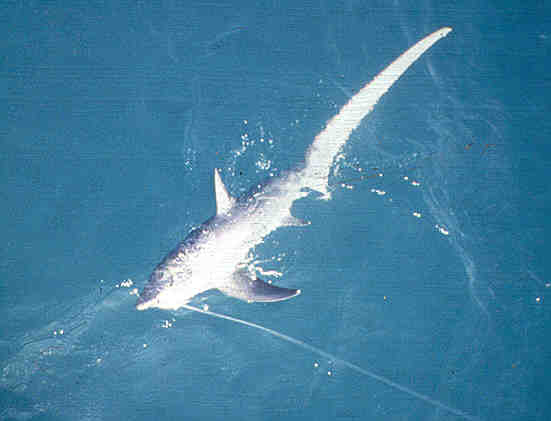|
Description: The Thresher Shark is named for its long, thresher-like tail, which is actually an extension of the caudal fins (upper lobe of the tail), which the shark uses to corral and stun prey. The tail can account for up to 1/3 of the total length of the shark and is used to stun prey. Thresher Sharks can measure up to 18 feet in length and weigh up to 750 pounds. They are greenish, bluish or gray above and white below. There are actually three species of Thresher Sharks, the largest of which is the Common Thresher, followed by the Bigeye Thresher and the Pelagic Thresher. Diet: Thresher Sharks mainly feed on oceanic fish such as bluefish, tuna, and mackerel, as well as crustaceans and squid. Thresher Sharks have rarely been implicated in attacks on humans, though several have been injured by the shark’s tail. Range/Habitat: Thresher Sharks are usually found in open tropical and temperate water, though they can be common near the Continental Shelves. They can also be found at times along the eastern and western Atlantic coast, and the North Pacific coasts of Asia and North America. They are less common in the central and western Pacific. Reproduction: The Thresher Shark is ovoviviparous, which means that the young hatch from eggs within the female’s body. Females usually give live birth to two to four pups. Pups who hatch early within the female may consume remaining unfertilized eggs. The Thresher Shark reaches reproductive maturity between ages seven to thirteen in males, and eight to fourteen in females. Threshers are thought to live for more twenty years or more. |
